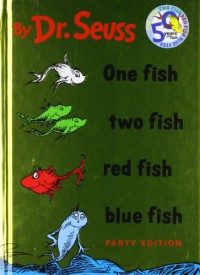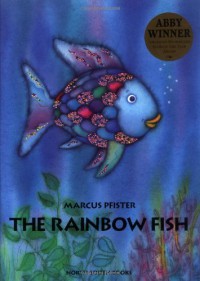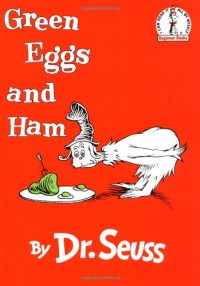Ms. Morris' Classroom Library
Alexander and the Terrible, Horrible, No Good, Very Bad Day

Alexander and the Terrible, Horrible, No Good, Very Bad Day by Judith Viorst is about about a boy named Alexander who has bad hair, who gets out of bed to face a day that seems to grow increasingly worse with each passing minute. Indeed, on the very first page, Alexander wakes to hair full of gum, trips on his skateboard, and drops a sweater in a sink full of water. Throughout his day, Alexander continues to have a bad day, and cannot wait for the day to end.
Guided Reading: Level M
Classroom Activities:
Have the students write about a time when they had a terrible, horrible, no good, very bad day at school. What happened? Did the day get better? How did it change? Who helped make it better?
Create a class rap about the Class's Terrible, Horrible, No Good, Very Bad Day at School. On a Mac, use GarageBand to create a podcast. On a PC use Audacity for recording. Each student records a part of their terrible, horrible, no good, very bad day. Have them create a chorus verse that will be said after every few recordings. After the voices are recorded, add a beat or music to the rap.
One Fish, Two Fish, Red Fish, Blue Fish

One Fish, Two Fish, Red Fish, Blue Fish by Dr. Seuss is about the activities of such unusual animals as the Nook, Wump, Yink, Yop, Gack, and the Zeds. It is a simple rhyming book for beginning readers.
Guided Reading: Level K
Classroom Activities:
- Let students explore pattern possibilities with the addition of a third color.
- Create a number book in the shape of a fish.
Cloudy with a Chance of Meatballs

Cloudy with a Chance of Meatballs by Judi Barrett is about life in the wonderful town of Chewandswallow. Instead of snow, wind, or rain, they get a different kind of weather that falls from the sky three times a day: breakfast, lunch, and dinner. The only bad part about living in Chewandswallow is that the people don't get their choice of what they'd like to fall from the sky: it may snow mashed potatoes, or rain juice or soup, or there might even be a storm of hamburgers that takes them by surprise. No one is too worried about the weather, until it takes a turn for the worse, the portions of food get larger and larger and fall faster and faster, until everyone in the town fears for their lives.
Guided Reading: Level M
Classroom Activities:
Learn about different types of weather, and how to stay safe during storms.
Students can keep a running record of what they ate for the school week. When completed, each student can create their own journal. The journals can be illustrated with the different foods and shared with partners.
Have the students read the thermometer at the same time every day for the next two weeks and record the temperature on a sheet of paper. At the end of two weeks have the students help you plot the readings on a graph. Discuss the graph and determine which days had the highest and lowest readings. Discuss any trends in the temperature and possible reasons for them. For example, you might notice that it’s getting warmer or colder as the days progress.
A Bad Case of Stripes

A Bad Case of Stripes by David Shannon is about Camilla Cream, who is worried about what other people think about her. She will not even eat lima beans, which she loves, because people at school don't like them. The very moment she most wants to fit in, she becomes completely covered in colorful stripes! She seems to change colors to match whatever is happening around her. When the class says the Pledge of Allegiance, she turns red, white, and blue! Instead of blending in, she's standing out.
Guided Reading: P
Classroom Activities:
After reading the book, students discuss how it makes people feel when others tease them, and how to accept differences in others.
The Mitten

The Mitten by Jan Brett, is about Nicki, a young Ukrainian boy, who hopes that his grandmother will knit him some cozy white mittens. After she makes them for him, she warns that if he loses them, it will be difficult to find them in the snow. Nicki assures her that he won't lose them, but no sooner than he leaves the house, he drops one of them! As he searches for his lovely mitten, something very interesting takes place. The creatures of the forest are slowly making their home in his mitten: a mole, then a rabbit, a hedgehog, an owl, a badger, a fox, and a bear! They pack themselves in as tight as they can, but a small mouse manages to come in and his whiskers tickle the bear's nose. The bear sneezes, and all of the animals pop out of the mitten, causing it to sail in the air just as Nicki is about to give up. Grabbing the mitten triumphantly, he takes it back to his grandmother's house.
Guided Reading: Level M
Classroom Activities:
Use The Mitten to teach sequencing, predicting, and retelling a story. The students could retell the story using different voices.
Thank you, Mr. Falker

Thank you, Mr. Falker by Patricia Polacco is about a girl named Trisha struggles to read. Her classmates make matters worse by calling her "dummy." Finally, in fifth grade, she is lucky enough to have a teacher who recognizes Trisha's incredible artistic ability, understands her problem, and takes the time to lead her to the magic of reading. Although dyslexia is never mentioned in the book, this story will provide great reassurance to children who struggle to overcome learning disabilities.
Guided Reading: Level M
Classroom Activities:
Have students work with a partner to write "thank you" pages for a class book. Each student writes one page about an important person in his or her life, beginning with the phrase "Thank you, __________ (name of person)." You could combine these with photographs or portraits of the students as well as student drawings of the person they have selected.
Have students make a chart entitled "Things You Can Say To Make People Feel Good About Themselves" to post in the classroom. Have students add to it as they think of suggestions.
Ask students how the story would change if Trisha's family did not move. Would Trisha learn to read? What would the other characters then have to do to make her feel good about herself? Would anything happen to the bully? Give them time to talk about this in small groups and write a brief story outline.
Have students do a Readers Theater presentation of Thank You, Mr. Falker. Readers Theater is a strategy in which students take a text and interpret it in dramatic form. It develops deeper comprehension, as students summarize a piece of text, write their own script, and perform their interpretation of the story.
The Polar Express

The Polar Express by Chris Van Allsburg is about a boy who boards a mysterious train: The Polar Express bound for the North Pole. Once there, Santa offers the boy any gift he desires. The boy asks for one bell from the harness of a reindeer.On Christmas morning, the boy finds the bell under the tree. The boy's mother admires the bell, but laments that it is broken because she cannot hear it ring. Only believers can hear the bell ring.
Guided Reading: Level N
Classroom Activities:
Extend learning about the polar regions with this lesson plan from National Geographic.
The Activity Idea Place offers a couple dozen language arts, art, and music ideas to help teach about animals of the polar regions.
Have a movie party with caramel nougat squares and hot chocolate.
Goodnight Moon

Before going to sleep, a little rabbit says goodnight to all his familiar possessions as his big, green bedroom slowly darkens. Tucked away in bed, the little bunny says "Goodnight room, goodnight moon." Goodnight Moon by Margaret Wise Brown
Guided Reading: Level H
Classroom Activities:
Read Goodnight Moon while encouraging students to join in on the words they are familiar with; Let students take turns masking letters in the context of the story such as 'G', 'm', 'b', 'c', 'r'. Also, see if students can locate the sight word 'and' on various pages
The Rainbow Fish

The Rainbow Fish by Marcus Pfister is about a beautiful fish who learns to make friends by sharing his most prized possessions. He shares his shimmering scales with others. This book has a great theme of sharing, with rainbow-colored foil stamping glitters on every page.
Guided Reading: Level M
Classroom Activities:
- Go over the importance of friendship with the children, and make a list on the board of qualities that friends have or should have.Tell the children to write a quality that they would like a friend to have, or something they do for a friend. It could be a sentence or a word. They can decorate their scale if they want. After they have finished with their scale, put the giant fish on the wall and add their scales to it.
Green Eggs and Ham

In Green Eggs and Ham by Dr. Seuss, Sam-I-Am tries to convince another Seuss character to eat green eggs and ham. This is a classic Dr. Seuss book that most children love. During Foundations Block, my CT read this book during Dr. Seuss week, and even cooked green eggs in-front of the students.
Guided Reading: Level J
Classroom Activities:
Students can work individually, with a partner, in a small group, or even as a class to sequence Sam's green eggs and ham adventure.
Ask students why they think Sam was so stubborn about not eating green eggs and ham. After some discussion, ask them to think of a food that they used to not like. Students will plan and then write their own "eating adventure" story. Encourage them to think of fun and creative places and situations to include in their story. You can even pull in some social studies curriculum by focusing on a particular city, state, region, or country.
The Giving Tree

The Giving Tree by Shel Silverstein is about a boy who visits a tree everyday. There the boy would eat her apples, swing from her branches, or slide down her trunk, and the tree was happy. But as the boy grew older he began to want more from the tree, and the tree gave and gave. This is a sweet story of how the tree gave all she had to they boy so that he could be happy, and it made her happy to continue to give.
Guided Reading: Level N
Classroom Activities:
Students can write a letter to the tree as it gave all it had to the boy.
Give each student a leaf cutout and have them write something positive about another classmate. All of the trees can be put on a tree on the classroom door or bulletin board. Students can then write a journal entry about how they felt receiving the kind compliment from a classmate.
Click, Clack, Moo Cows That Type

Click, Clack, Moo Cows That Type by Betsy Lewin is a book about Farmer Brown who has a problem. His cows like to type. Farmer Brown thinks it's odd when he hears typing sounds coming from the barn. But his troubles really begin when his cows start leaving him notes. First they demand better working conditions, then they stage a strike.
Guided Reading: Level M
Classroom Activities:
Perform the story as a readers theater exercise.
Ask the students to write letters from their pets to themselves. (use a relative’s or friend’s pet if they don’t have one) What would the pet ask for? What might they want to change in the house? Have students draw a picture of the pet and display the picture with the letters on a bulletin board.
Give students writing prompts to complete the sentences or begin a paragraph or story: • Living on a farm would be…
I like to keep warm by…
If my pet could talk, it would say…
My favorite thing to do on a computer is…
Because of Winn-Dixie

Because of Winn-Dixie by Kate DiCamillo is a novel about a girl named Opal who rescues a dog who she names Winn-Dixie. Because of Winn-Dixie, the preacher tells Opal ten things about her absent mother, one for each year Opal has been alive. Winn-Dixie is better at making friends than anyone Opal has ever known, and together they meet the local librarian, Miss Franny Block, who once fought off a bear with a copy of War and Peace. They also meet Gloria Dump, who is nearly blind but sees with her heart, and Otis, an ex-con who sets the animals in his pet shop loose after hours, then lulls them to sleep with his guitar. Opal spends all that sweet summer collecting stories about her new friends and thinking about her mother. This is one of my favorite books and I would give this books ten stars if I could. Needless to say, I would highly recommend this book!
Guided Reading: Level R
Classroom Activities:
Have your student pretend to be Opal and write a letter to her mother telling her all about life since moving to Naomi, Florida with her father. Letters should focus on describing the people she has met and the experiences she has had, plus whether she likes living in Naomi more now than when she first got there (and why). Teachers will be able to sense the extent to which the student read and understood the book from the letter than they produce.
For artistically inclined students... Have students imagine a map of the town of Naomi, placing different places mentioned in the book on the map. Locations are NOT clearly specified, so the student can create the map however they please. Instruct the student to include 15-20 people, places, and events from the book on the map. A person can be shown in more than one place at a time (ie: Otis at the pet store +Otis elsewhere playing music on the street).
Bud, Not Buddy

Bud, Not Buddy by Christopher Paul Curtis is a novel about a ten year old boy named Bud who is from Flint, Michigan. It's 1936, and the motherless Bud is on the run to find out who is father is. She left clues for him on posters, and he believes that these posters will lead him to his father.
Guided Reading: Level U
Classroom Activities: Students can make character maps and create comics exploring the major themes and events using characters and props from the novel Bud, Not Buddy.
Where the Wild Things Are

Where the Wild Things Are by Maurice Sendak is a book about a boy who is sent to bed early for being disobedient. While in his room, his imagination runs wild, and he dreams about a new land of the Wild Things where he becomes king over creatures.
Guided Reading Level: J
Classroom Activities: During Methods Block, I tutored fourth graders and read this book to them. We played a short game that allowed them to create their own monster. The students were then asked to write a narrative story about the monster they created.
Charlotte's Web

Charlotte's Web by E.B. White is a novel about a girl named Fern who adopts a pig named Wilbur. Wilbur is a runt born of a litter on Fern's father's farm. When it is announced that her father is going to kill the pig, Fern rushes forth to save it. Her father spares the pig, but only if Fern agrees to care for it. Falling in love immediately with the little pig, she feeds him regularly with a bottle, and names him Wilbur. Wilbur is Fern's constant companion until he grows big enough to be transferred to his new home in the barn of Fern's neighboring uncle. Fern is able to visit Wilbur, but is unable to see him as often. Out of boredom, Wilbur begins to befriend other animals in the barn, who often patronizingly instruct the still naïve little pig in the ways of life. His most important friend, however, turns out to be a spider named Charlotte, who occupies a web in the corner of a doorway above him. Her love for Wilbur, coupled with her ingenuity, will save Wilbur's life.
Guided Reading Level: R
Classroom Activities: Students can make a campaign poster to save Wilbur. Ask them to pay close attention to their word choice and to choose different words than E.B. White did in Charlotte’s Web.



